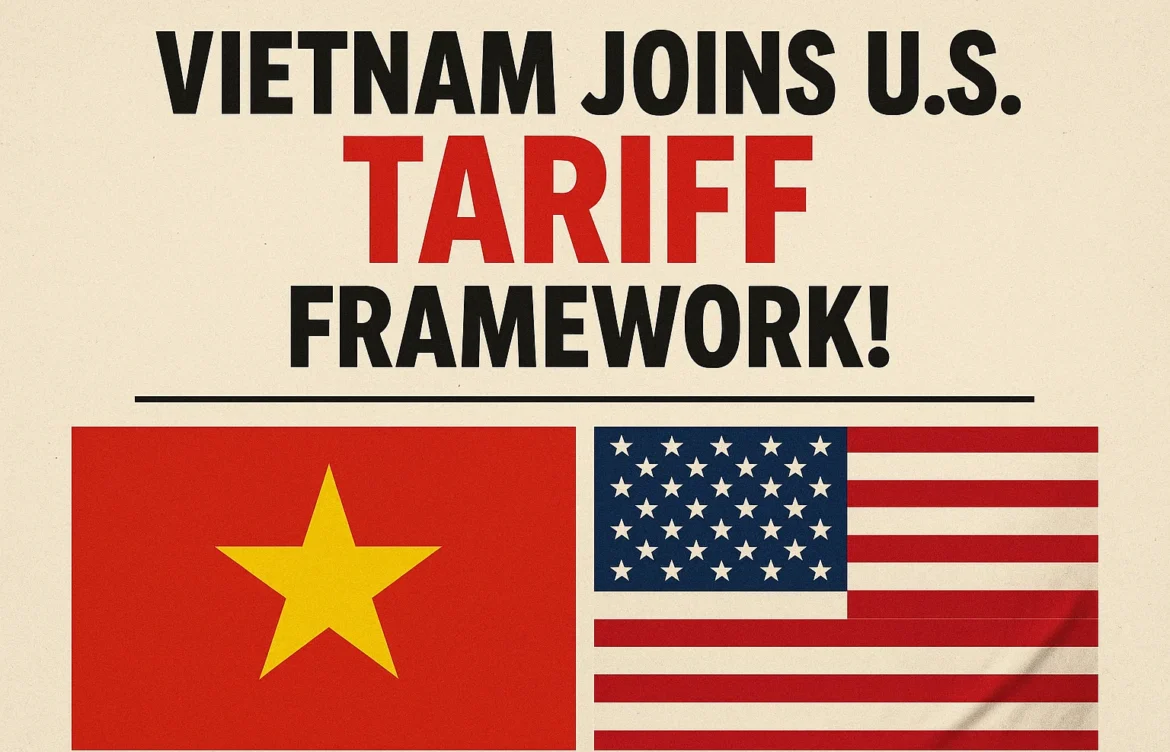
Vietnam Signs Historic Trade Agreement with the U.S. Under New Tariff Policy
In a move that could reshape the landscape of global supply chains, Vietnam has become the first Southeast Asian country to reach a trade agreement with the United States under President Trump’s renewed tariff agenda.
What’s in the deal?
The agreement introduces two key points:
- All goods exported directly from Vietnam to the U.S. will face a 20% tariff.
- Transshipped goods—items produced elsewhere (often China) but routed through Vietnam to the U.S.—will face a much steeper 40% tariff.
In return, Vietnam has agreed to fully open its markets to U.S. products, imposing zero tariffs on American exports such as SUVs, farm products, semiconductors, and commercial aircraft.
Why this matters
This agreement is significant for several reasons:
Vietnam secures continued access to the U.S. market, even under higher tariffs.
The U.S. gains better market entry for American goods, strengthening export opportunities in Southeast Asia.
The deal directly targets “transshipment” practices—where goods made in China are labeled as “Vietnam origin” to bypass U.S. tariffs. This has been a key loophole since the earlier rounds of the trade war.
Impact on global trade
For many businesses, especially those who relocated manufacturing to Vietnam to avoid Chinese tariffs, this is a turning point. While the 20% tariff is significant, it is still lower than the tariffs imposed directly on Chinese goods, which have sometimes exceeded 50%.
However, the 40% tariff on transshipped goods sends a clear signal: the U.S. will strictly enforce rules of origin, making it harder to game the system by routing Chinese-made goods through Vietnam.
Opportunities and challenges
- For U.S. businesses: The zero-tariff policy on exports to Vietnam could boost American brands, especially in auto, tech, and agriculture sectors.
- For Vietnamese manufacturers: There’s now an incentive to build genuine local production instead of merely finishing or relabeling products made elsewhere.
- For global supply chains: This could accelerate the diversification away from China, but also add cost and complexity.
What’s next?
This agreement might serve as a model for other Southeast Asian nations like Thailand, Malaysia, or Indonesia if they wish to maintain access to the U.S. market while avoiding being caught up in broader tariffs.
It also shows the Trump administration’s strategy: rather than broad tariffs against entire regions, it’s now shifting toward bilateral deals that reward compliance and punish loopholes.
Final thoughts
Vietnam’s agreement is both an opportunity and a warning:
- For U.S. exporters, it opens doors to a fast-growing market.
- For importers relying on Vietnamese supply chains, it’s time to check your true rules of origin to avoid the heavy 40% penalty.
As the global trade landscape continues to evolve, flexibility and compliance will be more critical than ever.
